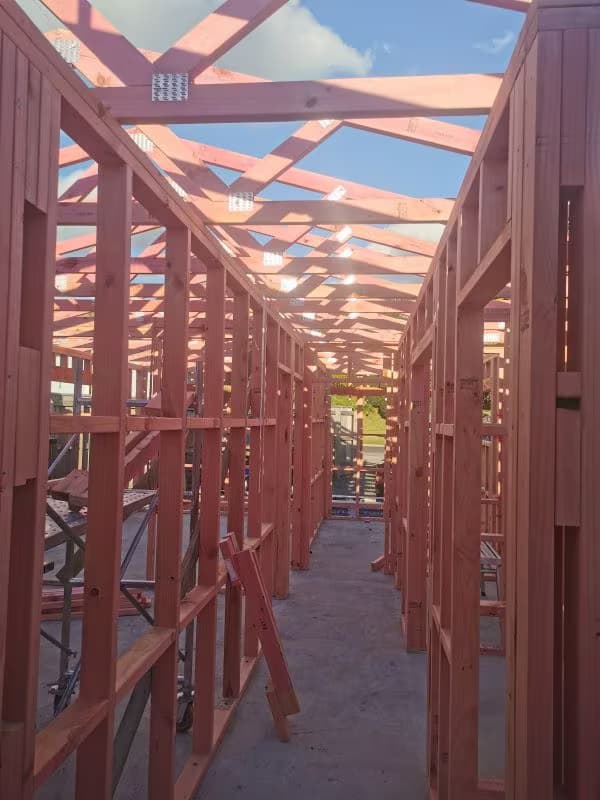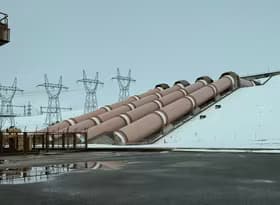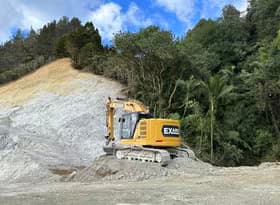
Soft commodity prices and competition hold down material prices
Building activity has grown strongly this decade, with both residential and non-residential activity reaching record levels. With the already-stretched construction industry trying to deliver more, it’s unsurprising that costs continue to rise. However, unlike the boom of the 2000s, increased labour costs are driving up the cost of construction, while material prices take a backseat.
Residential sector growing faster, but starting to taper off
Residential construction has a remarkable ability to scale up quickly, with annual growth in residential activity notching over 20% for a period both this decade and last. Growth in non-residential activity tends to be slightly more subdued, but with residential activity plateauing, the non-residential subsector is now growing more quickly than residential.
With growing activity comes growing costs…
Unsurprisingly, strong growth in the residential subsector has been accompanied by strong growth in costs, and price increases are necessary to draw in more resources quickly. Residential cost growth has averaged 3.6%pa this decade, faster than non-residential cost growth of 2.9%pa, and is a consequence of residential activity growing faster.
…including higher earnings for workers
Strong growth in the construction industry during both of the last two decades has led to earnings growth ahead of the economy-wide average. Earnings in the residential subindustry jumped notably in 2013 in response to an increase in activity, growth that was initially driven by demand associated with the Christchurch rebuild.
Material costs take a backseat this decade
Although material costs and labour costs were roughly equal partners in driving up construction costs through the 2000s, material costs have taken a backseat this decade, with more muted price increases. Increased labour costs are driving more of the rise in construction costs now.
Soft commodity prices and competition hold down material prices
Growth in material costs has been limited by soft underlying commodity prices and strong competition from imported finished materials. Low oil prices flow through to energy-intensive materials like glass, metals and cement, captured in the non-metallic mineral product1 category charted below. Likewise, low oil prices flow through to petrochemical-derived materials such as PVC and paint. Soft prices for forestry products have led to weak growth in prices for construction wood products too.
Work by Deloitte Access Economics for Fletcher Building2 highlighted that local manufacturers of cement, plasterboard and insulation, even with dominant market position, are kept in check by the presence of importers. Wood product manufacturers aren’t subject to the same extent of imported competition, but are still part of a low-margin commoditised market. Deloitte found that the market for metal roofing products was highly competitive, with manufacturers absorbing increases in raw material costs this decade, despite some significant cost pass-through in the 2000s.
Plumbers lead the subtrades
Cost data at a subtrade level, which includes both labour and material inputs, shows steady growth since 2011. Plumbing and drainage have led the pack, with an average cost increase of 4.9%pa. The cost of electrical works has risen 1.9%pa, heating ventilation and air conditioning by 1.8%pa, and site preparation by 2.7%pa.
Beyond the subtrades, engineering and architectural services costs were up by 2.5%pa, road transport by 2.6%pa, and plant and equipment hire by 3.3%pa.
Looking ahead
Looking ahead, we expect total construction activity to remain at a high level, peaking in early 2020 before gradually easing. In other words, the industry will remain at or near peak capacity for some time to come.
Sustained demand for labour, especially in trades like plumbing, will support further escalation in labour costs, especially in tight regional markets such as Auckland.
Any sustained devaluation of the New Zealand dollar following this week’s 50-point cut to the official cash rate will apply upward pressure to the price of materials. Imported raw materials will become marginally more expensive, but competition from importers will limit the extent to which domestic manufacturers can raise their prices.
1 Non-metallic mineral products include glass, fiberglass insulation, fibre cement cladding, bricks, concrete blocks, ready mix concrete, and plasterboard.
2 https://www2.deloitte.com/content/dam/Deloitte/nz/Documents/Economics/nz-en-DAE-Fletcher-cost-of-residential-housing-development.pdf

















